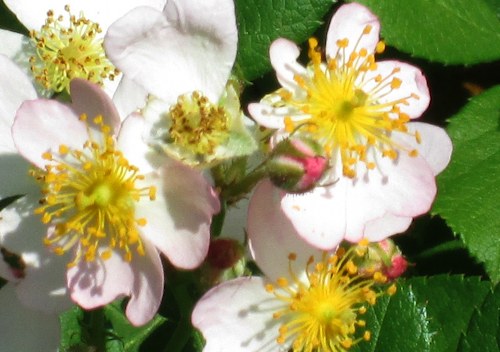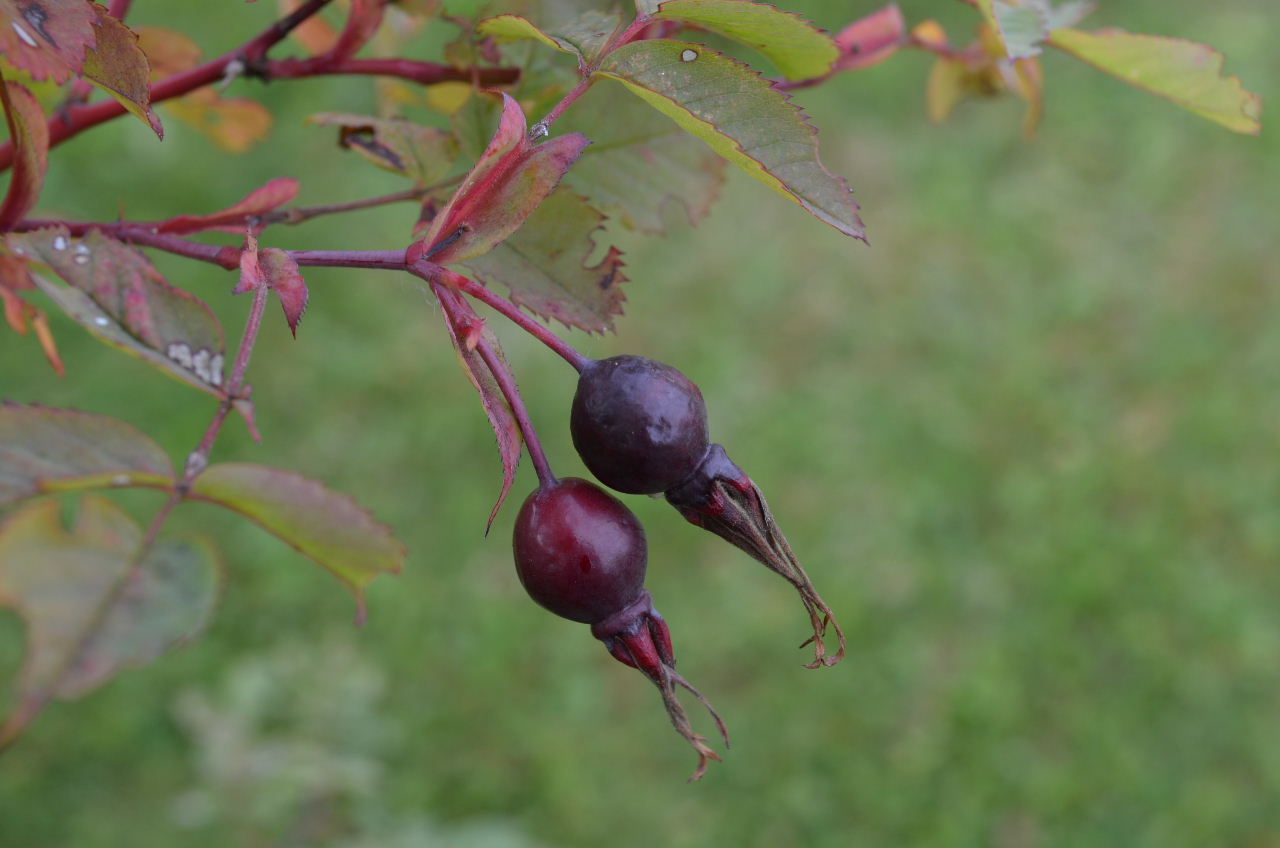Don,
No worries. I’m not making mass collections. And if I were, I would not be stopping along the interstate to take specimens. The two variations that I find mildly interesting are easily accessible. There is a pink-flowered Multiflora just a mile or so from my home, and the one I found with cupped flowers is further away, but safe from traffic and out of sight of the Multiflora police.
My particular concern at the moment, is how some botanists define species - and distinguish allied species - with far too few specimens. And to make things worse, they sometimes ignore specimens that conflict with their pronouncements.
Boulenger (1937) wrote about the remarkable resemblance of Rosa blanda to R. cinnamomea.
http://bulbnrose.x10.mx/Roses/breeding/Boulenger/BoulengerBlanda1937.html
“According Crépin, the paired prickles are absent in R. blanda and this statement has been repeated in the synopsis recently provided by Ms. Erlanson, without referring to the var. geminata Schuette, which she had spoken of in a previous work (1925) on the Michigan Roses. But the experience I have gained of the genus Rosa made me doubt the absolute constancy of this nature and, as I expected, it did not take me long to find exceptions — I even identified seven cases among specimens determined as R. blanda by Crépin himself. While these are exceptions, yet we must not forget that R. cinnamomea, the type of Cinnamomeae of Crépin, with “prickles usually regularly paired” can show exceptions in reverse, both in Europe and in Asia; such exceptions, on both sides, are likely to embarrass anyone seeking to identify isolated specimens whose origin is unknown, so we should not ignore them.”
Actually, Erlanson cited var subgeminata Schuette.
http://bulbnrose.x10.mx/Roses/breeding/Erlanson/ErlansonMackinac1925.html
In the same work Boulenger also wrote, “In a work that precedes this, I expressed the opinion that it is hardly possible to separate the R. gymnocarpa of America from R. Fargesiana of North China; if the specific distinction must be even, due to the imperfection of our knowledge of it, it remains questionable.”
Now it makes a little more sense to me how Almquist (in Täckholm, 1922) could regard R. willmottiae as a form of the American R. gymnocarpa, and R. davurica Pall. var lancifolia C. A. Meyer as R. blanda. R. davurica is closely allied to R. cinnamomea, which is confusingly similar to R. blanda.
The specimens Almquist identified as R. laxa (and, in his opinion, hybrids of beggeriana and cinnamomea) were diploids, with one exceptional tetraploid. Yang, et al. (2014) found only tetraploids in four populations of R. laxa.
There has been discussion and research into the proper identity of the plants grown in the U.S. and Canada as R. laxa and ‘Ross Rambler’. If they are diploid, they might be hybrids of laxa and cinnamomea, or derivatives from such hybrids.
Buck (1960) found that “Laxa-ness” (so to speak) was inherited as a unit character.
http://bulbnrose.x10.mx/Roses/breeding/Buck/BuckLaxa1960.html
“Pollen from the ‘Crimson Glory’-R. laxa seedling was effective in producing viable seed on a wide range of cultivars of the Hybrid Tea, Floribunda, and Grandiflora garden classes. The seedlings segregate into two sharply defined groups of approximately equal numbers. One group bears a pronounced resemblance to R. laxa in growth habit, foliage and prickle characteristics. The flowers, which are borne only in June, are single, two to three inches in diameter, and are in the lighter tones of pink, salmon, and yellow. All the plants in this group are as hardy as the species parent. The plants of the second group resemble the garden rose parent in floral and foliage characteristics. The plants are June-blooming; the everblooming habit of the Hybrid Tea and the remontance of R. laxa being absent. All plants of this group winter-killed during the winter of 1958-59, even though they had been given winter protection. All the seedlings retained the freedom from powdery mildew and the susceptibility to blackspot of the ‘Crimson Glory’-R. laxa parent.”
Buck noted that R. laxa Retz. is allied to R. cinnamomea. It is not clear to me whether Laxa-ness should be regarded as Beggeriana-ness or Cinnamomea-ness.
Karl

